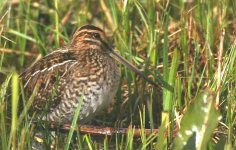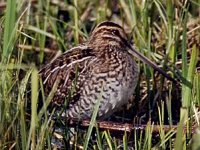Hi there...
This was taken at Leighton Moss RSPB (Lower Hide) yesterday. The weather was very stormy, with bright patches.
We had actually decided to wait for the shower to pass - when the Snipe crept up on us !
It got to within about 25/30 feet from the hide window.
Camera: EOS 300d with 170-500 Sigma zoom @ 500mm
Settings: Manual, speed: 1/4000, f5.6, image quality - fine. Iso: 400
The photo has been cropped and has had some basic adjustments made in Microsoft Photo Editor.
Basically, I'm not over impressed with the photo - this is the best of 15 or so that I took. Am I asking too much, can anyone with more experience point to some obvious flaws in focussing etc and make suggestions ?
Looking forward to your critiques ( I think ! )
Regards
Chris.
PS: View original (...not for the fainthearted or dial-up users) at: www.Original-idea.co.uk/Snipe.htm
This was taken at Leighton Moss RSPB (Lower Hide) yesterday. The weather was very stormy, with bright patches.
We had actually decided to wait for the shower to pass - when the Snipe crept up on us !
It got to within about 25/30 feet from the hide window.
Camera: EOS 300d with 170-500 Sigma zoom @ 500mm
Settings: Manual, speed: 1/4000, f5.6, image quality - fine. Iso: 400
The photo has been cropped and has had some basic adjustments made in Microsoft Photo Editor.
Basically, I'm not over impressed with the photo - this is the best of 15 or so that I took. Am I asking too much, can anyone with more experience point to some obvious flaws in focussing etc and make suggestions ?
Looking forward to your critiques ( I think ! )
Regards
Chris.
PS: View original (...not for the fainthearted or dial-up users) at: www.Original-idea.co.uk/Snipe.htm
Attachments
Last edited:





